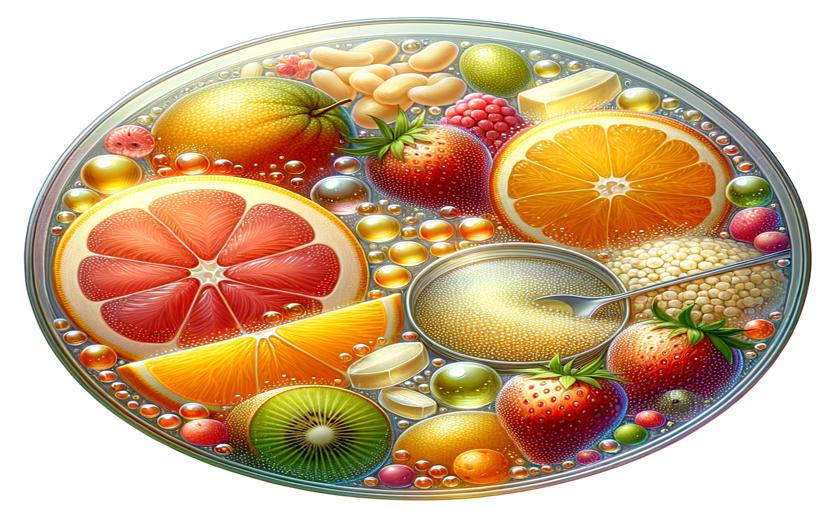
Plant Science News

 26th July, 2024
| Jenn Hoskins
26th July, 2024
| Jenn Hoskins
Boosting Garden Cress Growth with Humic Acids Controlled by Phenolic Radicals
A study by the University of Basilicata reveals that both natural and synthetic humic acids boost garden cress growth, with natural sources offering diverse benefits like enhanced root development and stress resilience, while synthetic types allow for targeted applications.
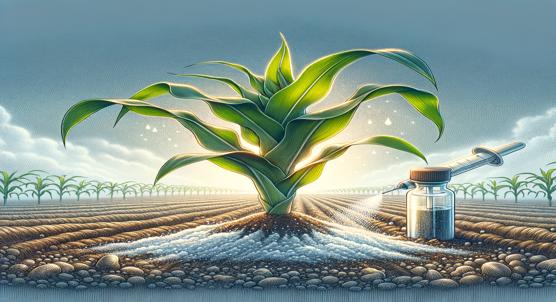
 26th July, 2024
| Jenn Hoskins
26th July, 2024
| Jenn Hoskins
How Seed Treatment with Plant Hormones Helps Corn Grow in Salty Soil
Seed priming with indole-3-acetic acid (IAA) enhances maize seedling resilience under salt stress by boosting germination, sugar content, and antioxidant activity. This technique offers a promising solution to improve crop yields in challenging conditions.

 26th July, 2024
| Jim Crocker
26th July, 2024
| Jim Crocker
Understanding Drought Resistance in Wild Eggplants Through Leaf Light Response
ICAR's study uses chlorophyll fluorescence imaging to explore drought tolerance in eggplants and their wild relatives. This noninvasive method helps identify resilient traits, aiding breeding programs to develop more drought-resistant varieties in response to climate change.
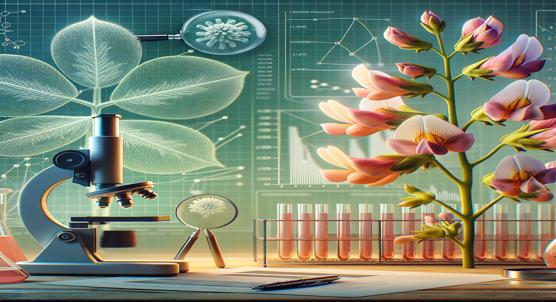
 26th July, 2024
| Jenn Hoskins
26th July, 2024
| Jenn Hoskins
Understanding Flowering Time in Chickpeas Through Genetic and Trait Analysis
Researchers at the University of Córdoba have identified key gene variants controlling flowering time in chickpeas, a crucial step towards breeding drought and heat-resistant varieties. This advancement promises higher yields and improved food security in challenging climates.
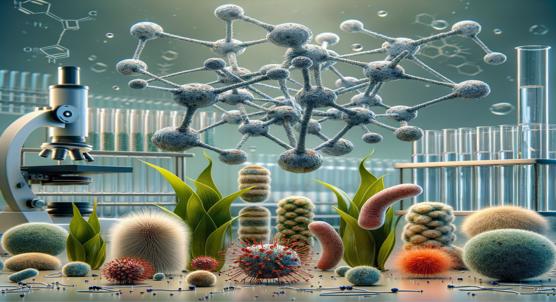
 26th July, 2024
| Jim Crocker
26th July, 2024
| Jim Crocker
Phospholipid Profiling of Plant Pathogens Using Advanced Separation Techniques
Researchers at the University of Münster have developed a novel method to analyze lipids in plant-pathogenic bacteria, offering detailed insights into their cell membranes. This breakthrough could lead to targeted treatments, enhancing agricultural productivity.
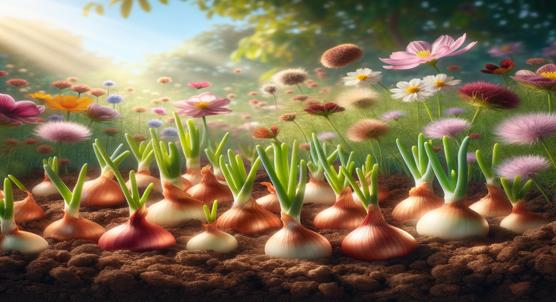
 25th July, 2024
| Jenn Hoskins
25th July, 2024
| Jenn Hoskins
Dataset for Detecting Small Onions and Flowering Plants
A new dataset from Universidad EAFIT offers high-res aerial images to detect green onion and foliage flower crops, enhancing precision agriculture. This tech-driven approach aims to support small farmers, improve crop monitoring, and boost food security.
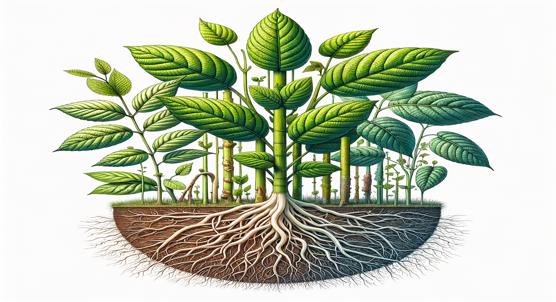
 25th July, 2024
| Jim Crocker
25th July, 2024
| Jim Crocker
Most Plant Mutations Are Specific to Certain Layers
Researchers at LMU Munich have uncovered how mutations in plant meristems—regions with stem cells—spread and lead to observable changes. Their study highlights the genetic and epigenetic mechanisms behind somaclonal variation, enhancing our understanding of plant development.

 25th July, 2024
| Jenn Hoskins
25th July, 2024
| Jenn Hoskins
Shallow Water Planting Boosts Cold Resistance in Young Tobacco Plants
Hunan Agricultural University's study reveals that shallow water seeding enhances cold tolerance in tobacco seedlings by promoting root development and boosting antioxidant enzyme activity, offering valuable insights for improving crop resilience in cold-prone regions.
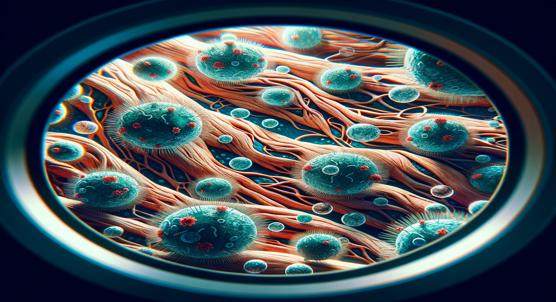
 25th July, 2024
| Greg Howard
25th July, 2024
| Greg Howard
Genome Sequencing of Tree Disease Pathogen Reveals Adaptations to Colonize Bark
Researchers sequenced the genome of Pseudocryphonectria elaeocarpicola, a fungus threatening Elaeocarpus plants in China. The findings reveal genes linked to plant infection and resistance, offering insights for developing targeted disease management and breeding strategies.

 24th July, 2024
| Greg Howard
24th July, 2024
| Greg Howard
Growing Beautiful Orchids: Best Practices for Soil, Light, and Sealing Methods
Orchids face a decline due to over-collection and habitat loss. A study on Cattleya walkeriana shows that using banana pulp in culture mediums, higher light levels, and specific sealing systems can boost growth and survival, offering a practical solution for orchid conservation.

 24th July, 2024
| Jenn Hoskins
24th July, 2024
| Jenn Hoskins
Health Benefits and Key Compounds in Ashwagandha Plant Extracts
A study on ashwagandha reveals its potential to treat neurological and gastrointestinal disorders due to its significant enzyme inhibition and spasmolytic activities. However, high toxicity levels suggest further research is needed to isolate safe, effective compounds.

 24th July, 2024
| Jenn Hoskins
24th July, 2024
| Jenn Hoskins
Pollination Services for Watermelon and Green Tomato Crops in Coastal Regions
Bees are vital for pollinating crops like watermelon and green tomato. A study in Jalisco, Mexico, found that honeybees are crucial for fruit production, highlighting the need to conserve habitats to support pollinator populations and ensure food security.

 24th July, 2024
| Jenn Hoskins
24th July, 2024
| Jenn Hoskins
Key Receptors Work Together to Boost Tomato Plant Defenses
Recent research reveals that the peptide hormone systemin activates tomato plant defenses by binding to the SYR1 receptor, which then pairs with SERK proteins. This interaction triggers a chain of phosphorylation events, enhancing the plant's resistance to pests and pathogens.
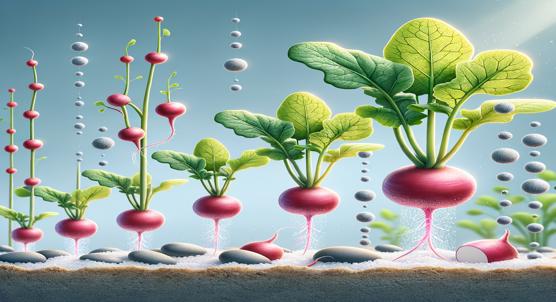
 24th July, 2024
| Greg Howard
24th July, 2024
| Greg Howard
How Zinc Oxide Nanoparticles Help Radish Seeds Grow in Salty Conditions
A new study from Nanjing Agricultural University uses near-infrared hyperspectral imaging (NIR-HSI) to non-destructively monitor radish seed germination. This method enhances seed quality assessment, offering faster, more accurate results compared to traditional techniques.

 24th July, 2024
| Jenn Hoskins
24th July, 2024
| Jenn Hoskins
Understanding How Melons Absorb and Manage Phosphate Under Stress Conditions
Shanghai Jiao Tong University's research on PHT1 Pi transporters in melon reveals how certain genes help plants cope with phosphorus deficiency. These insights could lead to more efficient crops and sustainable farming, reducing reliance on polluting fertilizers.

 24th July, 2024
| Jim Crocker
24th July, 2024
| Jim Crocker
How Asparagus Helps Protect the Brain from Fluoride Damage
Tianjin University finds Asparagus officinalis (ASP) can mitigate brain damage from fluoride exposure. ASP's antioxidative and anti-inflammatory properties reduce brain injury, dental fluorosis, and bone damage, offering a promising treatment for fluorosis-related health issues.

 24th July, 2024
| Greg Howard
24th July, 2024
| Greg Howard
Boosting Apple Water Efficiency and Strength by Regulating Key Plant Enzyme
Researchers at Northwest A&F University found that overexpressing the FERONIA receptor kinase gene in apple trees enhances water use efficiency and drought resilience. This discovery could lead to more robust apple crops under climate stress.
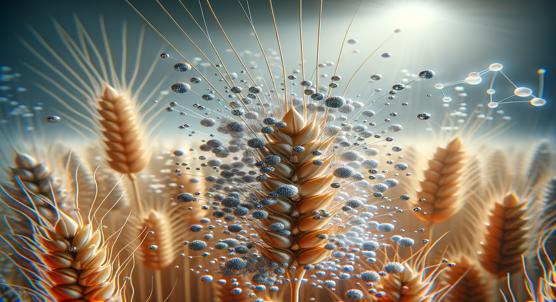
 24th July, 2024
| Jenn Hoskins
24th July, 2024
| Jenn Hoskins
Silver Nanoparticles Impact Disease Control in Various Wheat Types
A study by Yasouj University shows that silver nanoparticles can boost antioxidant properties in wheat, potentially controlling bacterial blight and improving crop resilience. This method could stabilize yields and reduce the ecological impact of wheat farming.
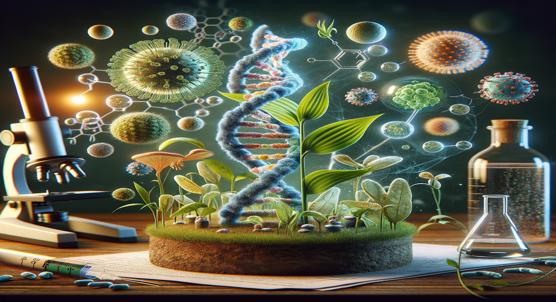
 24th July, 2024
| Jim Crocker
24th July, 2024
| Jim Crocker
Understanding How Plant Pathogen DNA Binding Predicts Function and Evolution
Researchers at the University of California have mapped how transcription factors (TFs) bind to DNA in the plant pathogen Phytophthora infestans. This study reveals both conserved and unique binding patterns, shedding light on gene regulation and adaptation in oomycetes.
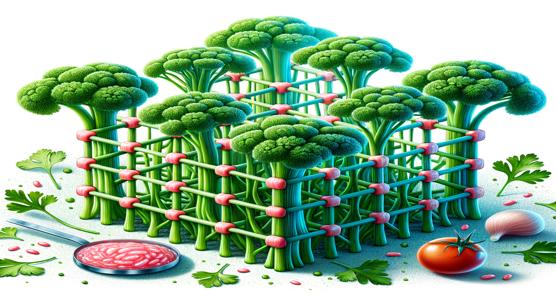
 24th July, 2024
| Jenn Hoskins
24th July, 2024
| Jenn Hoskins
3D Parsley Scaffolds Guide Muscle Cell Growth for Lab-Grown Meat
Recent research shows decellularized parsley scaffolds with fibrous pore structures significantly enhance muscle cell differentiation, offering a promising method for producing high-quality cultured meat with better texture and nutritional content.
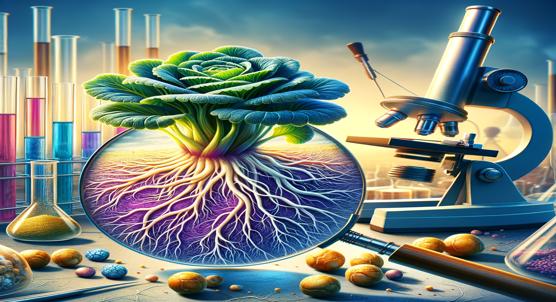
 23rd July, 2024
| Jenn Hoskins
23rd July, 2024
| Jenn Hoskins
Nano-silicon and Sodium Reduce Damage from Low Potassium in Chicory
Researchers found that adding nano-silicon and sodium to potassium-deficient chicory boosts potassium accumulation and use efficiency, improving plant health. However, sodium in potassium-sufficient conditions can harm chicory's physiological aspects.
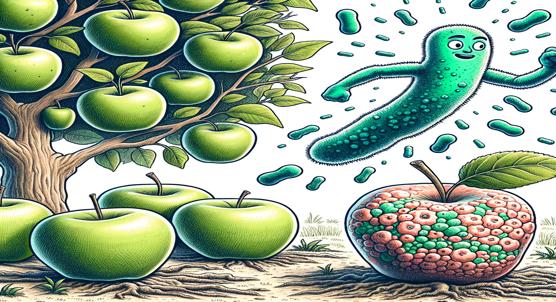
 23rd July, 2024
| Greg Howard
23rd July, 2024
| Greg Howard
Natural Bacteria from Apples Could Help Fight Apple Ring Rot After Harvest
A study by Qingdao Agricultural University reveals Bacillus tequilensis QNF2 as a promising biocontrol agent against apple ring rot, offering an eco-friendly alternative to harmful fungicides by significantly inhibiting the fungal pathogen Botryosphaeria dothidea.

 23rd July, 2024
| Jim Crocker
23rd July, 2024
| Jim Crocker
Basil Plants Boost Tomato Healing Through Scent Signals in Mixed Gardens
Recent research from Kagoshima University reveals that basil can boost tomato plant defenses by releasing volatile compounds. These compounds enhance wound response and resistance to pests, offering a sustainable alternative to chemical pesticides in agriculture.
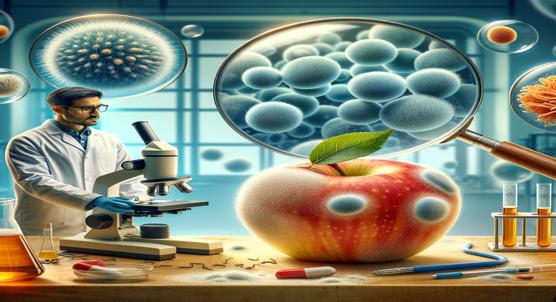
 23rd July, 2024
| Jenn Hoskins
23rd July, 2024
| Jenn Hoskins
Discovering a Yeast to Control Gray Mold in Apples and How It Works
New research reveals Bullera alba PGY-2 yeast effectively combats gray mold in apples, enhancing defense enzymes and competing for nutrients, offering a sustainable alternative to synthetic fungicides for postharvest disease management.
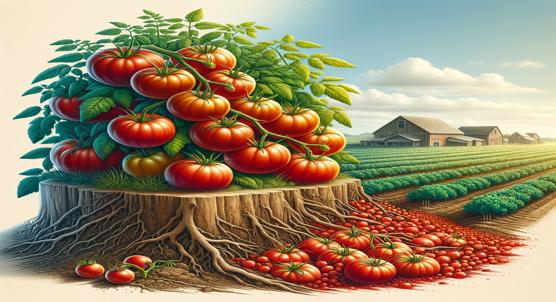
 23rd July, 2024
| Jenn Hoskins
23rd July, 2024
| Jenn Hoskins
Finding the Best Places for Wild Tomatoes to Improve Cultivated Tomato Farming
Climate change threatens global agriculture, including tomatoes. Sun Yat-sen University's research shows wild tomatoes' habitat data can help improve domesticated varieties' resilience, especially against drought. Conserving wild relatives is key for sustainable crop development.
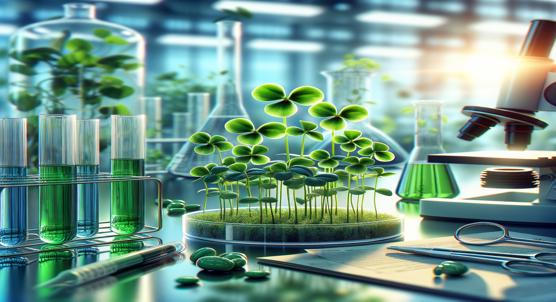
 23rd July, 2024
| Jim Crocker
23rd July, 2024
| Jim Crocker
Boosting Vincristine Levels in Lab-Grown Madagascar Periwinkle Cultures
Researchers at MGSM's Dadasaheb Dr. Suresh G. Patil College have developed a method to boost vincristine production in Madagascar periwinkle using triploid endosperm tissue and optimized culture conditions. This approach could enhance the yield of this vital anti-cancer compound.
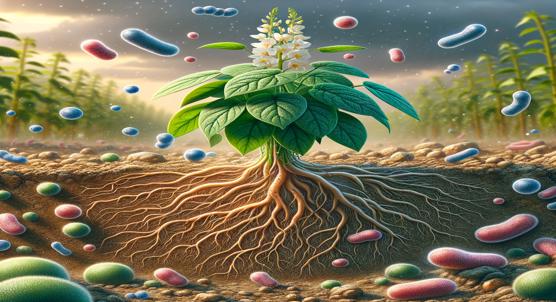
 23rd July, 2024
| Jim Crocker
23rd July, 2024
| Jim Crocker
How Beneficial Microbes Help Lentil Plants Thrive in Polluted Soil
Research from Aligarh Muslim University shows that symbiotic microbes like Rhizobium bacteria and mycorrhizal fungi can significantly boost lentil growth and reduce heavy metal uptake in fly ash-amended soils, offering a promising strategy for enhancing food security.
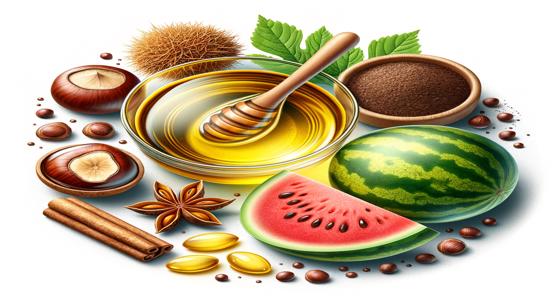
 22nd July, 2024
| Jenn Hoskins
22nd July, 2024
| Jenn Hoskins
Using Chestnut and Watermelon Peels to Clean Eosin Yellow Dye from Water
The University of the Punjab's study shows that citric acid-treated chestnut and watermelon peels can efficiently remove toxic Eosin yellow dye from wastewater, offering an eco-friendly and cost-effective solution to industrial pollution.

 21st July, 2024
| Jenn Hoskins
21st July, 2024
| Jenn Hoskins
Nutrient Competition in Apple Blossoms Prevents Fire Blight Infection
A study reveals how Pantoea agglomerans outcompetes the fire blight pathogen Erwinia amylovora for arabinogalactan in apple flowers, suppressing its virulence. This microbial competition offers new strategies for disease control, reducing reliance on chemical treatments.
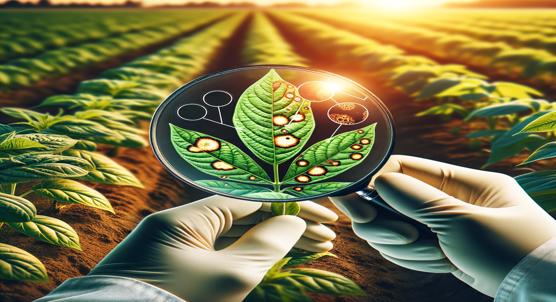
 21st July, 2024
| Jenn Hoskins
21st July, 2024
| Jenn Hoskins
Improving Deep Learning for Identifying Crop Diseases in Real-World Conditions
Automated crop disease identification via CNNs shows high accuracy in labs but drops significantly in real-world fields. The study suggests improving data quality and diversity over new model designs for better practical use, aiding farmers and boosting agricultural productivity.
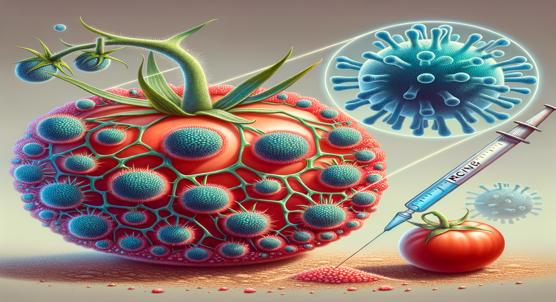
 21st July, 2024
| Jenn Hoskins
21st July, 2024
| Jenn Hoskins
Enzyme Pic14 Weakens Tomato Immune Response by Blocking Key Protein Activation
Recent research from Tel-Aviv University reveals that the Pic14 gene in tomatoes negatively regulates immune responses by dephosphorylating Mkk2, thus balancing defense mechanisms and preventing excessive cell death, offering insights for developing disease-resistant crops.

 21st July, 2024
| Jim Crocker
21st July, 2024
| Jim Crocker
How Apple Resists Alkaline Conditions Through Key Proteins and GABA Synthesis
Scientists at Northwest A&F University discovered that γ-aminobutyric acid (GABA) helps plants resist alkaline stress. Key players include MdNAC104, which lowers GABA levels, and MdSINA2, which boosts them. This breakthrough could lead to crops better suited for alkaline soils.
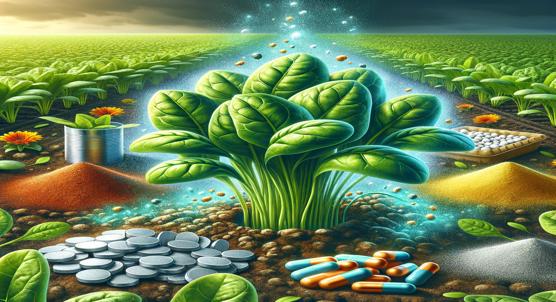
 20th July, 2024
| Jim Crocker
20th July, 2024
| Jim Crocker
Boosting Spinach Nutrition and Reducing Soil Toxins with Various Zinc Sources
Recent research from Northwest A&F University shows that zinc oxide nanoparticles can significantly reduce cadmium contamination in soil and plants, promoting healthier spinach growth and offering a promising solution for mitigating heavy metal pollution in agriculture.
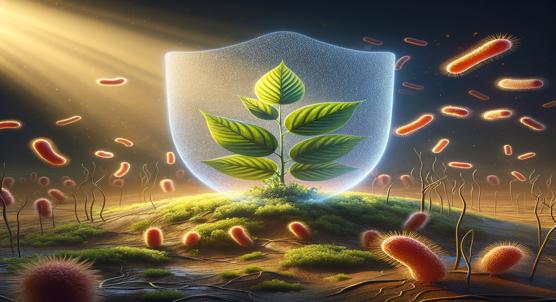
 20th July, 2024
| Greg Howard
20th July, 2024
| Greg Howard
Understanding How Fire Blight Resistance Proteins Work to Protect Plants
Researchers at Seoul National University have identified a protein in wild apple species that helps resist the devastating fire blight disease. This discovery could lead to new, genetically resistant apple varieties, enhancing agricultural productivity.

 20th July, 2024
| Jim Crocker
20th July, 2024
| Jim Crocker
How Heatwaves and CO₂ Levels Affect Mustard Plant Pollution Cleanup
Heatwaves, worsened by climate change, reduce plant biomass and phytoremediation efficiency. A study on Indian mustard shows higher CO2 levels can partially offset these effects, enhancing resilience and antioxidant activity during heat stress.
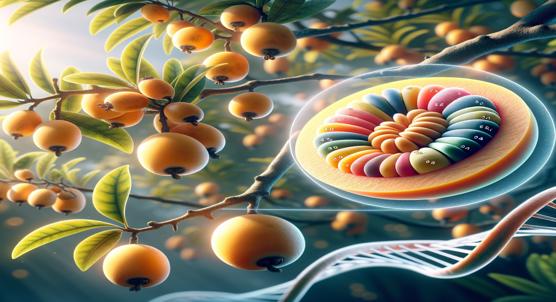
 20th July, 2024
| Jenn Hoskins
20th July, 2024
| Jenn Hoskins
Discovering Key Genes in Loquat and Their Role in Producing Plant Pigments
Researchers at Southwest University identified EjMYB5, a key transcription factor regulating proanthocyanidin accumulation in loquat. Overexpressing EjMYB5 in tomatoes and tobacco altered flavonoid levels, offering insights for improving fruit quality and health benefits.
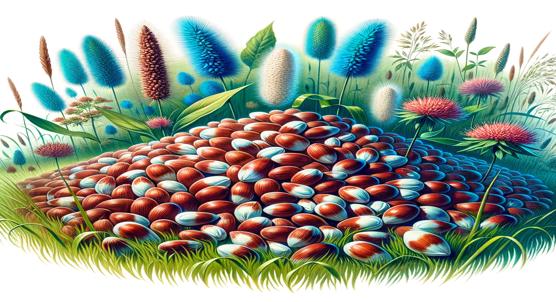
 20th July, 2024
| Greg Howard
20th July, 2024
| Greg Howard
Seed Yield Linked to Growth Hormone Genes in Wild Kentucky Bluegrass
Researchers at Ningxia University reveal that cytokinins, plant hormones crucial for cell division, significantly influence seed yield in Kentucky bluegrass by regulating gene expression during panicle development. This insight could enhance agricultural productivity.
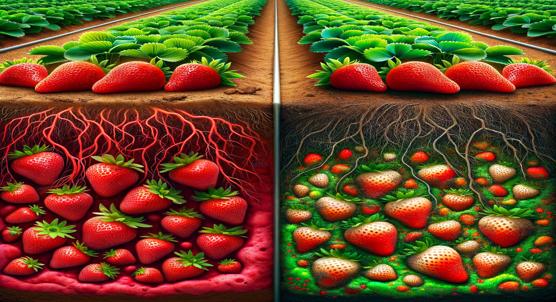
 20th July, 2024
| Jim Crocker
20th July, 2024
| Jim Crocker
How Bacteria Communities Form in Healthy and Unhealthy Strawberry Farms
A study by the Polish Academy of Sciences reveals key bacterial differences in healthy vs. unhealthy strawberry farms. Identifying beneficial microbes could enhance plant health and productivity, promoting sustainable agriculture and food security.
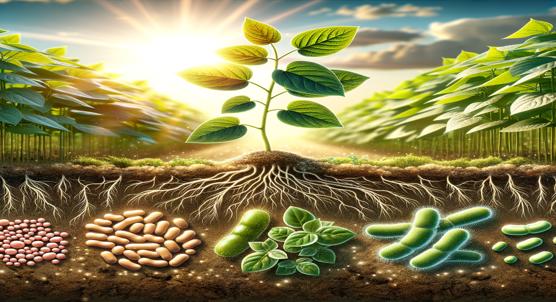
 20th July, 2024
| Greg Howard
20th July, 2024
| Greg Howard
Bacterial Communities Drive Soil Health, Plant Growth, and Soybean Yield
São Paulo State University’s study reveals that using specific bacterial consortia in soybean cultivation can boost soil fertility, plant health, and crop productivity. This microbial approach reduces the need for fertilizers and pesticides, promoting sustainable agriculture.

 20th July, 2024
| Jenn Hoskins
20th July, 2024
| Jenn Hoskins
Cassava Yield Stability and Genetic Traits in Tropical Humid Regions
Cassava, vital for millions, faces challenges from environment interactions affecting yield. A study identified stable, high-performing genotypes using advanced methods, aiding in the development of robust cultivars for better food security and nutrition.
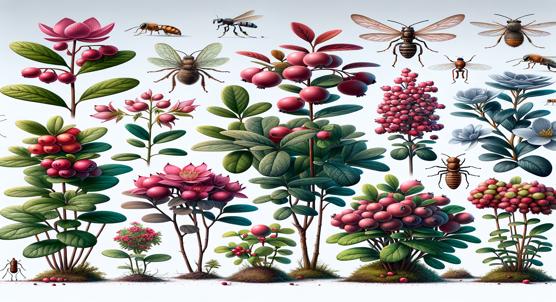
 20th July, 2024
| Greg Howard
20th July, 2024
| Greg Howard
Cranberry Plant Variations and Their Resistance to Multiple Insect Pests
The University of São Paulo's study reveals that cranberry genotypes with higher total phenolics offer better resistance to herbivores. This insight is crucial for breeding programs, suggesting that modern hybrids, focused on yield, may be more susceptible to pests.
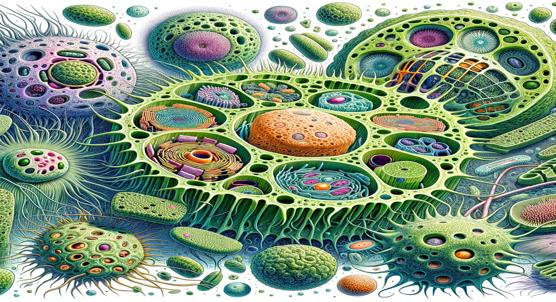
 20th July, 2024
| Jenn Hoskins
20th July, 2024
| Jenn Hoskins
Plant-Based Cell Systems for Quick and Easy Experimentation
Climate change threatens global agriculture, but new chloroplast-based gene expression systems from the Max-Planck Institute offer hope. These systems enable rapid genetic prototyping across various plants, potentially leading to more resilient and productive crops.
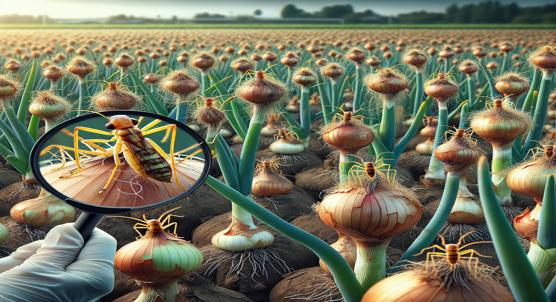
 20th July, 2024
| Jim Crocker
20th July, 2024
| Jim Crocker
New Sampling Plan to Classify Thrips Populations in Onion Fields
Cornell researchers developed a sequential sampling plan for onion thrips, cutting sample size by 78% and maintaining 96% decision accuracy. This method saves time and labor while effectively managing thrips populations in onion fields.
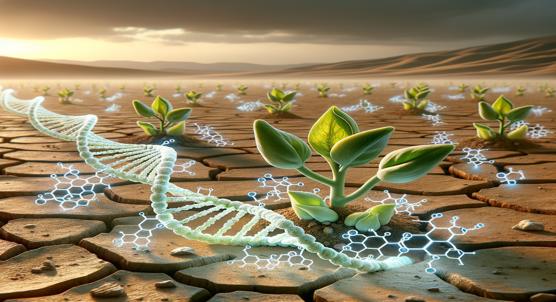
 20th July, 2024
| Jenn Hoskins
20th July, 2024
| Jenn Hoskins
How Long Non-Coding RNAs Help Rapeseed Seedlings Cope with Drought Stress
A groundbreaking study reveals how long non-coding RNAs (lncRNAs) help rapeseed adapt to drought and rehydration. Key plant hormones like ABA and auxin play crucial roles, offering new insights for developing drought-resistant crops.

 20th July, 2024
| Jenn Hoskins
20th July, 2024
| Jenn Hoskins
How Cherry Blossoms React to Increased Ozone: Health and Emissions
Elevated ozone levels initially stimulate Prunus × yedoensis seedlings but ultimately harm their physiology, reducing photosynthesis, pigment content, and cell integrity. This study underscores the need to manage ozone pollution in urban areas to protect plant health.
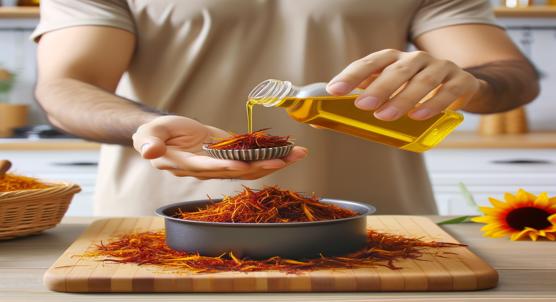
 19th July, 2024
| Jenn Hoskins
19th July, 2024
| Jenn Hoskins
Better Extraction of Healthy Compounds from Saffron Waste Using Sunflower Oil
Researchers developed an eco-friendly method using ultrasound and sunflower oil to extract phenolic compounds from saffron waste. This sustainable technique enhances antioxidant activity, offering potential applications in food, aquaculture, and cosmetics.
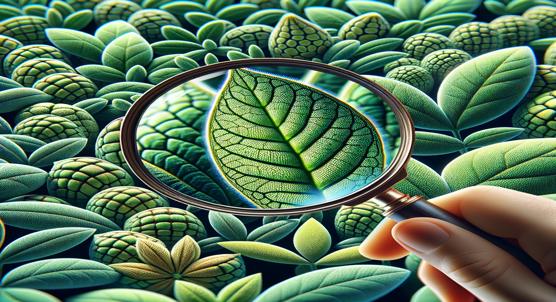
 19th July, 2024
| Greg Howard
19th July, 2024
| Greg Howard
Understanding Leaf Shape and Gene Activity in Unique Soybean Varieties
A study by South China Agricultural University reveals that modifying soybean leaf traits, such as shape and size, can enhance crop yields. By analyzing a mutant with rolled and narrow leaves, researchers identified key genetic and hormonal factors that could boost productivity.
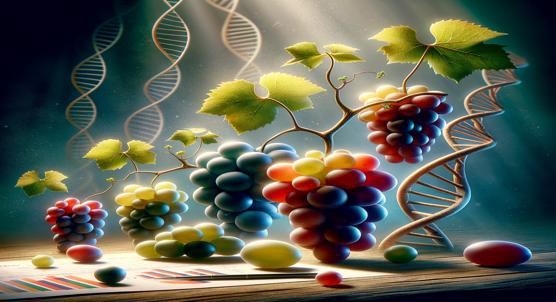
 19th July, 2024
| Jenn Hoskins
19th July, 2024
| Jenn Hoskins
Understanding How Specific Genes Influence Grape Shape
Researchers at Nanjing Agricultural University identified key grape genes, particularly VvOFP4, that regulate fruit shape. Overexpressing VvOFP4 in plants altered their morphology, suggesting its potential in breeding programs to diversify fruit shapes.
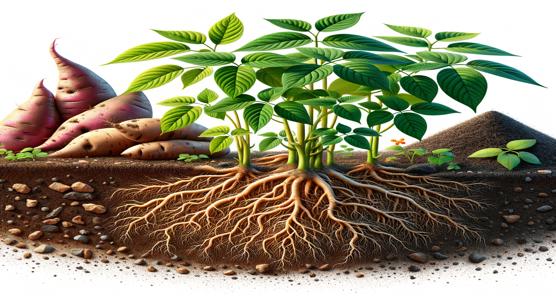
 19th July, 2024
| Jenn Hoskins
19th July, 2024
| Jenn Hoskins
How Chicken Manure and Biochar Affect Nutrients in Sweet Potato Leaves and Roots
Combining poultry manure and wood biochar significantly boosts sweet potato nutrient content, enhancing both leaf and root minerals. This sustainable approach also proves economically viable, offering higher crop yields and returns for farmers.
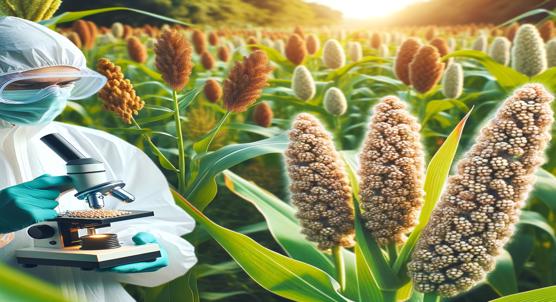
 19th July, 2024
| Jenn Hoskins
19th July, 2024
| Jenn Hoskins
Exploring Sorghum and Foxtail Millet Compounds for Cancer-Fighting Potential
Recent research reveals that phytochemicals in Sorghum and Foxtail millet grains can inhibit cancer cell growth by binding effectively to the DHFR enzyme, showing potential as dietary interventions for breast and prostate cancer, comparable to standard drugs.
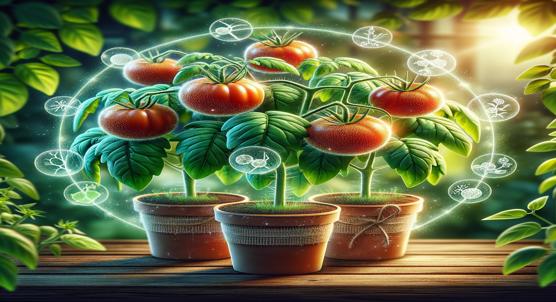
 19th July, 2024
| Greg Howard
19th July, 2024
| Greg Howard
How Azelaic Acid Helps Tomatoes Resist Fungal Infections
Researchers in Iran found that treating tomato plants with azelaic acid boosts their defense against early blight. The treatment enhances key enzymes and modulates defense pathways, reducing oxidative stress and improving resistance, potentially leading to more resilient crops.
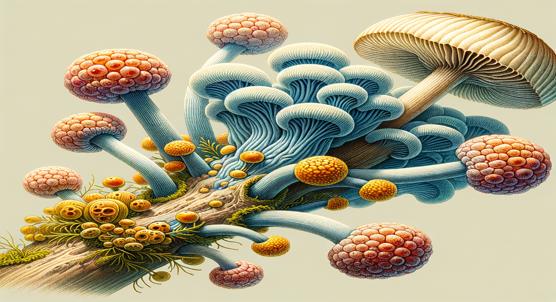
 19th July, 2024
| Jenn Hoskins
19th July, 2024
| Jenn Hoskins
New Discoveries: Three Key Factors in the Fungus That Causes Plant Galls
Researchers at the University of Bonn have discovered three new proteins from the maize smut pathogen Ustilago maydis that interact with the maize TPL protein RELK2, affecting plant growth and immune responses. This insight could lead to improved crop resistance strategies.
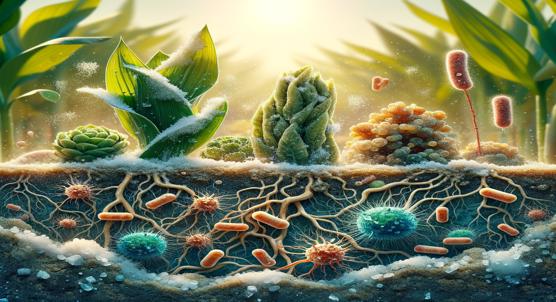
 19th July, 2024
| Jim Crocker
19th July, 2024
| Jim Crocker
How Salty Soil Affects Bacteria in Plants and Crops
A study from Humboldt University reveals specific bacteria help salt-tolerant plants, or halophytes, survive in high-salinity soils. Identifying these bacterial markers could enhance crop resilience amidst rising soil salinity due to climate change and human activities.

 19th July, 2024
| Jim Crocker
19th July, 2024
| Jim Crocker
Complete Genome Sequences of Two Viruses Found in Echinacea Seeds
Researchers in Korea discovered two new viruses in echinacea seeds, expanding the Tombusviridae family. These viruses, closely related to oat chlorotic stunt virus, highlight the complex evolution and diversity of plant viruses, emphasizing the need for ongoing surveillance.
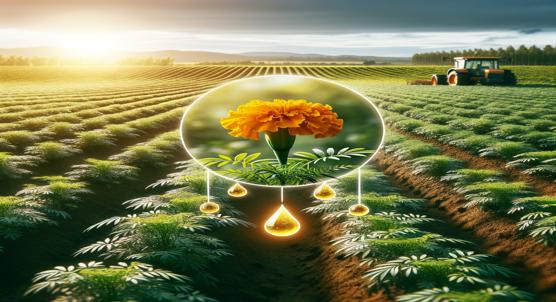
 19th July, 2024
| Jenn Hoskins
19th July, 2024
| Jenn Hoskins
Biopesticide Impact on Crops Using Extracts from Marigold Plants
Marigold extracts show promise as eco-friendly pesticides, effectively killing major crop pests in a study by PES University. These plant-based solutions could reduce reliance on harmful chemicals, supporting sustainable agriculture.

 19th July, 2024
| Greg Howard
19th July, 2024
| Greg Howard
Genetic Diversity in Traditional and Wild Japanese Iris Varieties
Researchers at Okayama University stress the urgent need to conserve the genetic diversity of wild Iris ensata var. spontanea. These wild relatives hold key traits that can enhance the resilience and quality of cultivated varieties, crucial for future agricultural sustainability.

 19th July, 2024
| Jenn Hoskins
19th July, 2024
| Jenn Hoskins
Genes Influencing Flowering in Bambara Groundnut
Researchers at the Federal University Oye-Ekiti have identified genetic markers controlling flowering in Bambara groundnut. These findings could help improve crop yields and resilience by targeting genes involved in stress responses and developmental processes.
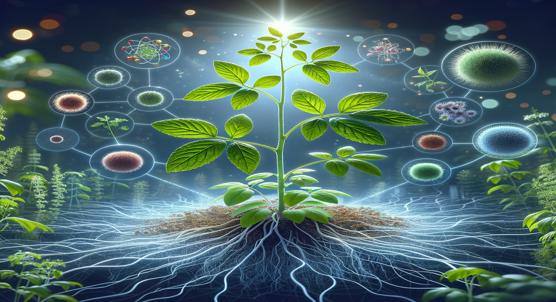
 19th July, 2024
| Jenn Hoskins
19th July, 2024
| Jenn Hoskins
Enhanced Plant Resistance Against Wilt Disease in Cumin Using Microbial Blends
Researchers developed a microbial mix to combat Fusarium wilt in cumin, significantly boosting disease control and plant growth. This approach, leveraging multiple beneficial microbes, shows promise for sustainable agriculture and increased crop yields.
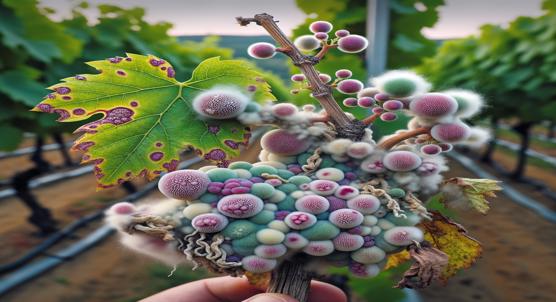
 18th July, 2024
| Greg Howard
18th July, 2024
| Greg Howard
Gene Deletions Cause Grapevine Resistance to Downy Mildew to Fail
Researchers have identified the avrRpv3.1 locus in Plasmopara viticola, revealing how this pathogen overcomes grapevine resistance. This discovery sheds light on the genetic mechanisms behind downy mildew adaptation, paving the way for better crop protection strategies.
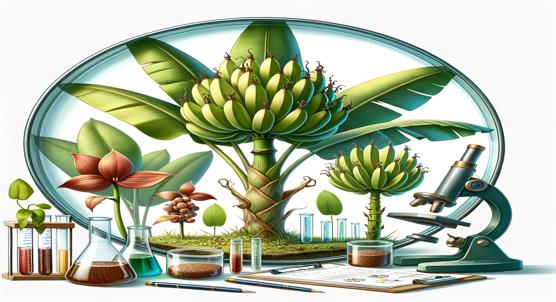
 18th July, 2024
| Jenn Hoskins
18th July, 2024
| Jenn Hoskins
Reliable Genes for Measuring Disease Resistance in Different Banana Varieties
Researchers identified stable reference genes in banana genotypes resistant and susceptible to Fusarium wilt, a disease threatening global banana production. This discovery aids accurate gene expression analysis, crucial for developing resistant banana cultivars.
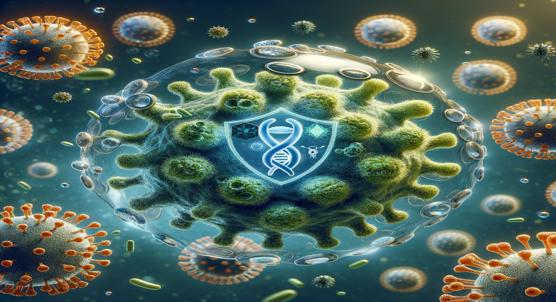
 18th July, 2024
| Greg Howard
18th July, 2024
| Greg Howard
How a Virus Stops Plant Defenses to Boost Immune Response
New research reveals how tomato plants maintain low levels of immune receptors yet trigger strong defenses against pathogens. The study highlights the role of the E3 ligase SBP1 in regulating the turnover of the NLR protein Sw-5b, ensuring rapid immune responses upon infection.

 18th July, 2024
| Jenn Hoskins
18th July, 2024
| Jenn Hoskins
Understanding How Wheat Copes with Drought and Salt Stress
A study from Ludong University reveals the vital role of Alfin-like proteins in plant stress responses. These proteins regulate genes crucial for coping with drought and salinity, offering potential for developing more resilient crops and ensuring food security.
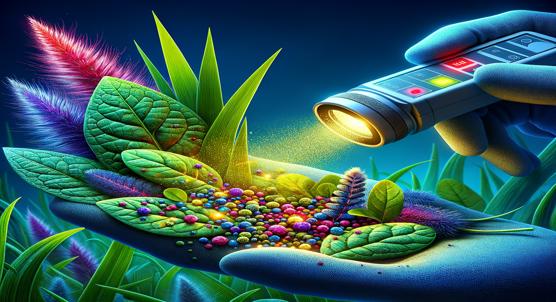
 17th July, 2024
| Jenn Hoskins
17th July, 2024
| Jenn Hoskins
New Fluorescent Sensor Detects Mercury and Iron in Vetiver Grass and Spinach
Researchers at Islamic Azad University developed a novel fluorescence probe using mesoporous silica to detect mercury and iron ions in food. This sensitive and selective method helps monitor heavy metal pollution, crucial for protecting ecosystems and human health.
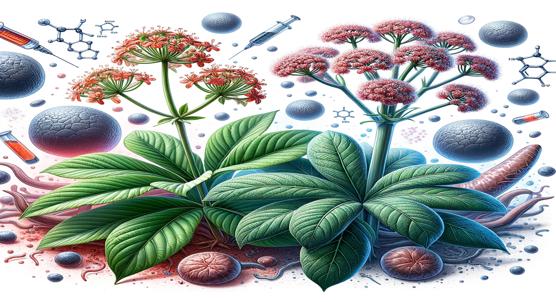
 17th July, 2024
| Jenn Hoskins
17th July, 2024
| Jenn Hoskins
How Valerian and Kava Extracts Affect Liver Enzymes and Protein Transporters
Researchers at Universidade Federal de São João del-Rei found that valerian and kava-kava significantly increase midazolam levels by inhibiting its intestinal metabolism, highlighting the need to monitor herbal and conventional drug interactions for safer integrative healthcare.
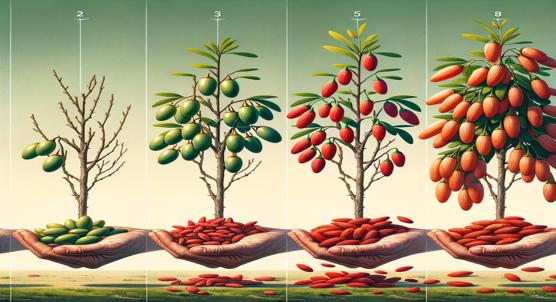
 17th July, 2024
| Greg Howard
17th July, 2024
| Greg Howard
Changes in Goji Berry Toughness and Ease of Picking Over Time
Beijing Forestry University’s study on goji berries reveals the best harvesting times for top cultivars Ningqi No. 1 and Ningqi No. 7, optimizing quality and reducing damage. Key findings suggest late afternoon for Ningqi No. 1 and morning for Ningqi No. 7.
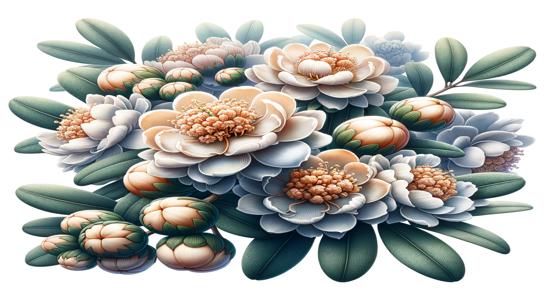
 17th July, 2024
| Greg Howard
17th July, 2024
| Greg Howard
How Flowering Genes Influence Blooming Traits in Soapberry Family Plants
Researchers at South China Agricultural University have uncovered how variations in the FT gene family regulate flowering in Sapindaceae plants like lychee and rambutan. These insights could lead to breeding fruit varieties with optimized flowering times, enhancing productivity.



